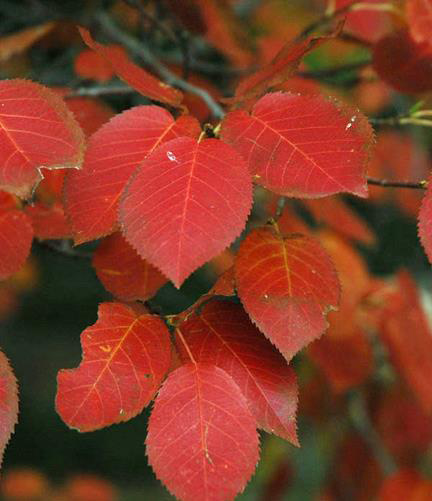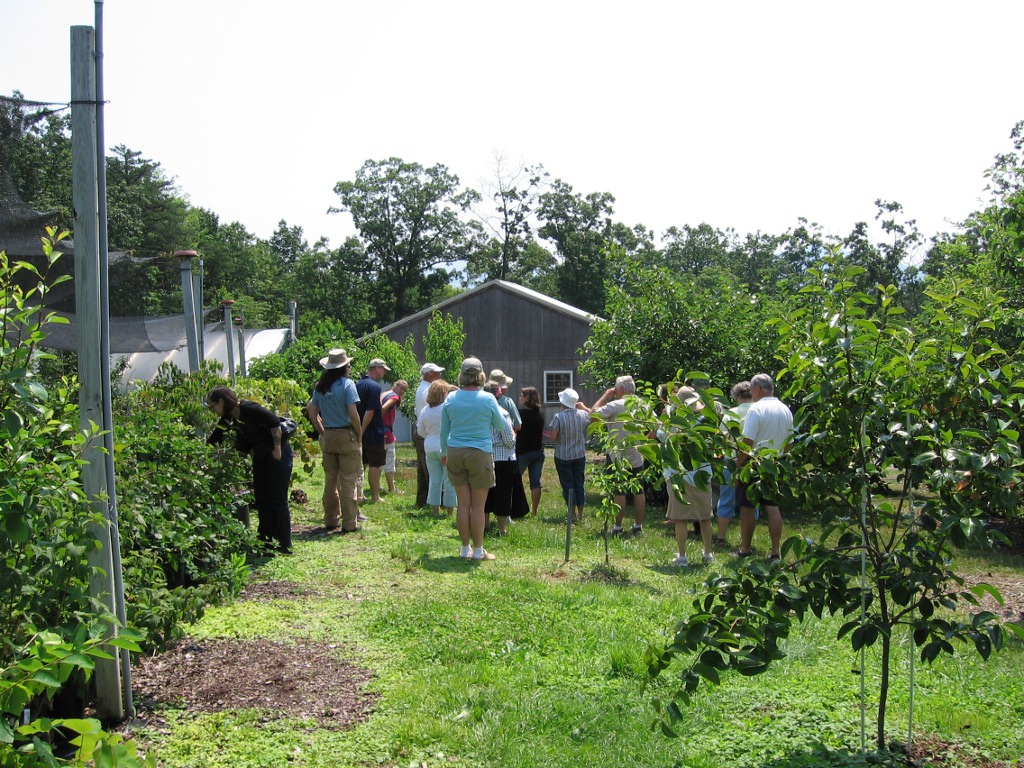| Blueberries | Che, Seedless |
|---|---|
|
Blueberries are beautiful ornamentals for your home. Shiny bay-like leaves and lily of the valley type flowers rival any small shrub in beauty. Plants thrive with no spray and produce year after year. In our area of Virginia the following varieties ripen from May to November. Their fall color is vivid red, holding their leaves into December. These varieties are varied in ripening time, size of bush and flavor. This is the best list compiled for excellent all around choices. Blueberries are self-fertile. Never add stable manure or lime to your blueberry soil. Add generous amounts of peat moss to soil before planting.
View our selection of Blueberries |
View our selection of Che, Seedless |
| Cherries, Bush | Currants |
|
View our selection of Cherries, Bush |
We introduced the Josta some years ago to the U.S. and are happy with its less-care productive habit. The ribes family (gooseberries, jostas, currants) do best in our area of VA with some shade and good soil. In Southern areas ribes in full sun can loose their leaves in late summer but will return the following spring. Although they grow under neglect, a little care goes a long way.
View our selection of Currants |
| Dogwoods | Elaeagnus |
|
View our selection of Dogwoods |
Elaeagnus has many fruiting species throughout the world.
View our selection of Elaeagnus |
| Elderberries | Miscellaneous |
|
Elderberries have large pretty clusters of white flowers and their berries make excellent jams and jellies. Berries ripen in August. Plants are bushier and more productive if five year old wood is pruned out. Will grow in any type soil and in shade! Choose two different varieties for fruit set, except Nova.
View our selection of Elderberries |
View our selection of Miscellaneous |
| Feijoa | Figs |
|
View our selection of Feijoa |
View our selection of Figs |
| Filberts aka Hazelnut | Flowers |
|
View our selection of Filberts aka Hazelnut |
View our selection of Flowers |
| Honeysuckle (bush) | Josta Berries |
|
Great space saving bush, not a vine. Fruits are about the size of a goji berry, tart with high flavor and deep blue in color. One of the first fruits to ripen at the nursery, just before strawberries. Very popular plant in northern Europe. Flowers are inconspicuous compared to the wild honeysuckle. Plants about 4' tall and upright about 3' wide. Space in 4' circle., Need two different plants to pollinate. Healthy benefits are documented as being "very good for you." Plants are a blue green in leaf, compact and ornamental. Zone 3-7a. View our selection of Honeysuckle (bush) |
View our selection of Josta Berries |
| Juneberries (aka Serviceberry) | Pomegranates |
Most people who have made the acquaintance of a juneberry need no instruction on how to enjoy the fruit. Merely stand by the bush and enjoy the fresh berries. The blueberry-like fruits turn blue-black when fully ripe. They ripen before blueberries and are very ornamental with showy white flowers in spring. The self-fertile fruits come in summer, a fall display of red leaves finishes the show. No spray - Less care!  Amelanchier Juneberry Serviceberry Fall Red Leaf Color View our selection of Juneberries (aka Serviceberry) |
The refreshing subacid fruits are eaten out-of-hand or used in salads. The juice can be enjoyed fresh or used in sauces, jellies, ices, etc. Plants are hardy and can take brief periods of temperatures under 10°F with their northern outdoor limit to Zone 7. Hedge spacing should be around 7' or give each tree a space of about 10' in diameter (dwarf at 4' spacing). Self-fertile, 10' tall except in northern zones where they are bushy around 6'. They have very pretty red flowers.
View our selection of Pomegranates |
| Quince | |
|
The quince, grown for its large, yellow fruits, should not be confused with the flowering quince, which is a completely different plant. The fruiting quince is a deciduous, shrub-like tree with crooked branches. The fruit, which ripens in the fall, has delicious aroma, is used in desserts, jelly (one of the finest you ever tasted) and preserves. Unfortunately in our humid climate in the south they are one of the more challenging plants to grow because of fire blight and leaf spot.
View our selection of Quince |
|
| S h o w A l l | |
| Show all of the plants - this could take a while if the category is large... | |
